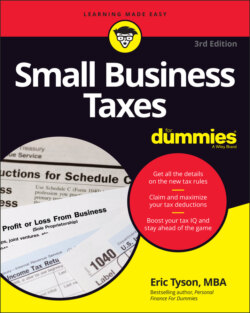Читать книгу Small Business Taxes For Dummies - Eric Tyson - Страница 38
Your marginal income tax rate for federal income taxes
ОглавлениеMarginal is a word that people often use when they mean “small” or “barely acceptable.” But with taxes, marginal has a different meaning. The government charges you different income tax rates for different portions of your annual income. So your marginal tax rate is the rate that you pay on the so-called “last dollars” you earn. You generally pay less tax on your first, or lowest, dollars of earnings and more tax on your last, or highest, dollars of earnings. This system is known as a graduated income tax, a system that goes back hundreds of years to other countries.
The fact that not all income is treated equally under the current tax system isn’t evident to most people. When you work for an employer and have a reasonably constant salary during the course of a year, a stable amount of federal and state taxes is deducted from each paycheck. Therefore, you may have the false impression that all your earned income is taxed equally.
Table 1-1 gives the 2022 federal income tax rates for singles and for married people filing jointly.
Your marginal tax rate is the rate of tax that you pay on your last, or so-called highest, dollars of taxable income. For example, according to Table 1-1, if you’re single and your taxable income during 2022 totals $55,000, you pay federal income tax at the rate of 10 percent on the first $10,275 of taxable income. You then pay 12 percent on the amount from $10,275 to $41,775 and 22 percent on income from $41,775 up to $55,000. In other words, you effectively pay a marginal federal tax rate of 22 percent on your last dollars of income — those dollars in excess of $41,775.
After you understand the powerful concept of marginal tax rates, you can see the value of the many financial strategies that affect the amount of taxes you pay. Because you pay taxes on your employment income and your investment earnings (other than retirement accounts), you need to make many of your personal financial decisions with your marginal tax rate in mind.
For example, when you have the opportunity to earn some extra money, how much of that extra compensation you get to keep depends on your marginal tax rate. Your marginal income tax rate enables you to quickly calculate the additional taxes you’d pay on the additional income.
Conversely, you quantify the amount of taxes that you save by reducing your taxable income, either by decreasing your income — for example, with pretax contributions to retirement accounts — or by increasing your deductions.
Actually, you can make even more of your marginal taxes. In the next section, I detail the painful realities of income taxes levied by most states that add to your federal income tax burden. If you’re a middle-to-higher income earner, pay close attention to the sidebar later in this chapter where I discuss the alternative minimum tax.
